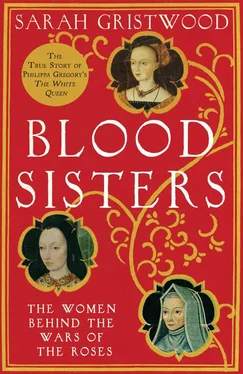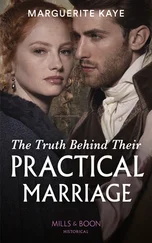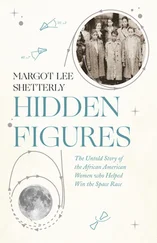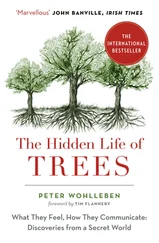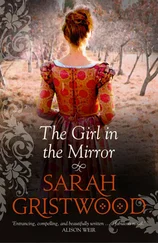There had, however, been an alternative line of succession in the shape of the Yorkists – descended, like the Lancastrians, from Edward III’s younger sons. The white rose Yorkists had arguably a better claim than the Lancastrians, depending on the attitude taken to a woman’s ability to transmit rights to the throne: while the Lancastrian progenitor, John of Gaunt, had been only Edward’s third son, the Yorkists were descended in the female line from his second son Lionel, as well as in the male line from his fourth son, Edmund. And there was no denying the fact that, because Henry V had died so early and Henry VI had therefore succeeded as a nine-month-old baby, men had begun to cast their eyes around and think of their opportunities. There was no denying, either, that even now Henry seemed both reluctant and unfitted to assume his destined role. If Henry – now mature, now married – were indeed to prove himself a strong king, the Lancastrian line should hold the throne indefinitely. If not, however, there was that other possibility: the more so since the present Duke of York, while still loyal to the crown, was an able and active man (an ally of Humfrey Duke of Gloucester) and married to a woman – Cecily Neville – as forceful as himself.
In 1445, the year Marguerite of Anjou arrived in England, neither Anne Neville nor Margaret of Burgundy had yet been born, let alone Elizabeth of York. Elizabeth Woodville – about eight years old, though no one had bothered to record her precise date of birth – was growing up in rural obscurity. Indeed, out of our seven protagonists only Cecily Neville was a woman of full maturity. Margaret Beaufort was just a toddler, though her bloodline meant she was already a significant figure, a prize for whom others would compete. While Cecily would become the matriarch of the ruling house of York, Margaret’s bloodline was an important carrier of the Lancastrian claim. In fact, at this moment she (or any son she might bear) might be considered heir presumptive to the throne until children came to her kinsman Henry VI.
Margaret Beaufort had been born in 1443 at Bletsoe in Bedfordshire. Her mother was a comparatively obscure widow who already had children by her first husband, Sir Oliver St John. Margaret’s father, however, was the Earl (later Duke) of Somerset, and from him she inherited a debatable but intriguing relationship to the throne.
Her grandfather, the first Earl of Somerset, had been one of John of Gaunt’s sons by his mistress Katherine Swynford. John’s nephew, Richard II, had confirmed by binding statute that all the children of the pair were rendered legitimate by their subsequent marriage, and able to inherit dignities and estates ‘as fully, freely, and lawfully as if you were born in lawful wedlock’. When John of Gaunt’s eldest son (by Blanche of Lancaster) seized Richard’s throne, and had himself declared Henry IV, this first Earl of Somerset became half-brother to the king. But when in 1407 Somerset requested a clarification of the position laid down in that earlier legitimation, the resultant Letters Patent confirmed his entitlement to estates and noble rank with one very crucial proviso – ‘ excepta dignitate regali ’, excepting the dignities of the crown.
Less controversially, Margaret was also heiress to great lands. But by the time of her birth, the anomalies of her family’s position – royal, but yet possibly excluded from ruling – had been compounded by her father’s chequered career.
Somerset had been captured as a young man in the wars with France, and held captive there for seventeen years. When he returned to England only a few years before Margaret’s birth, he set about trying to assume the position to which he felt his blood entitled him – but, as the author of the Crowland Abbey chronicles put it, ‘his horn was exalted too greatly on high’. 7In 1443 his position – his closeness in blood to a king short of relatives – had led to his appointment as commander of England’s army in fresh hostilities against the French. But the campaign was a disaster and Somerset was summoned home in disgrace, his daughter having been born while he was away. Only a few months later, in May 1444, he died, the Crowland chronicler asserting (‘it is generally said’) that he had committed suicide – a heinous sin in the fifteenth century. The rumours surrounding his death only added to the dubiousness of the baby Margaret’s position, and perhaps later increased her well-documented insecurities.
Somerset’s brother Edmund, who succeeded to the title, was able to ensure that the Beaufort family retained their influence – not least because of the friendship he would strike up with the new queen. It was this friendship which would bring him into conflict with the Duke of York, and with York’s wife Cecily.
Born in 1415 to the powerful Ralph Neville, Earl of Westmorland, and known as the beautiful ‘Rose of Raby’ after the family stronghold, Cecily was the daughter of his second marriage, to Joan Beaufort – of the same notably Lancastrian family as Margaret Beaufort. But the political divisions of later years had not yet taken shape and indeed, though Cecily would become the Yorkist matriarch, her father had supported the Lancastrian usurpation of Richard II by John of Gaunt’s son, Henry IV.
Joan Beaufort was John of Gaunt’s daughter by Katherine Swynford – in later years Cecily, John of Gaunt’s granddaughter, might have found it galling that Margaret Beaufort could be regarded as inheriting John of Gaunt’s Lancastrian claim when she was only his great-granddaughter. The vital difference was that Margaret’s claim had come through her father and her father’s father – through the male line. 8
By the time Cecily was born in May 1415, the Neville family was enormous. Joan Beaufort had two daughters from her first marriage, and when she married Ralph he had a large family already. They went on to produce ten more surviving children. By contrast Cecily’s husband, Richard of York, had just one sister. His marriage would bring him an almost unparalleled number of in-laws, but in the fifteenth century in-laws figured as potentially trustworthy allies and were more a blessing than a curse. Certainly the Nevilles would – in many ways, and for many years – do Richard proud.
Richard had been born in 1411, grandson to Edward III’s fourth son, Edmund. In 1415 his father (another Richard) was executed for his involvement in a plot against Henry V. The child eventually became Ralph Neville’s ward. By that time the boy had inherited the dukedom of York from a childless uncle; and later another childless uncle died, this time on his mother’s side, leaving Richard heir to the great Welsh and Irish lands of the Mortimer family.
Whether or not there were any thought that he might be king-in-waiting, York was an undoubted catch and it was inevitable that Ralph Neville would hope to keep this rich matrimonial prize within his own family. York’s betrothal to Cecily took place just a year after he came into the Nevilles’ care. The following year Ralph himself died, and York’s wardship passed into the hands of Cecily’s mother, Joan. Full, consummated marriage would have been legal when Cecily was twelve, in 1427, and had certainly taken place by 1429 when permission was received from the papacy for them jointly to choose a confessor. 9
In medieval terms, Cecily was lucky. She would have known Richard well and he was only four years her elder. And since Richard, like Joan, had moved into the glittering world of the court, it seems probable that Cecily would have done so, too – unless separations are to be deduced from the fact that their first child was not born for several years, though after that they came with notable frequency.
Cecily gave birth to that first child – a daughter, Anne – in 1439 and a first son, Henry, in February 1441 at Hatfield: then the property of the Bishop of Ely, but frequently available to distingushed visitors or tenants. But Henry did not live long; just as well, perhaps, that Cecily had the distraction of an imminent move to France, where York had been appointed governor of the English territories, still haunted by the spectre of Joan of Arc, the holy Maid, burnt there only a decade before. In Rouen, the capital of English Normandy, the couple set up home in such state that an officer of the household had to be appointed to overlook Cecily’s expenditure, 10which included lavishly jewelled dresses and even a cushioned privy. Their second son, the future Edward IV, was born there in April 1442; another son, Edmund, in May 1443; and a second daughter, Elizabeth, the following year.
Читать дальше
